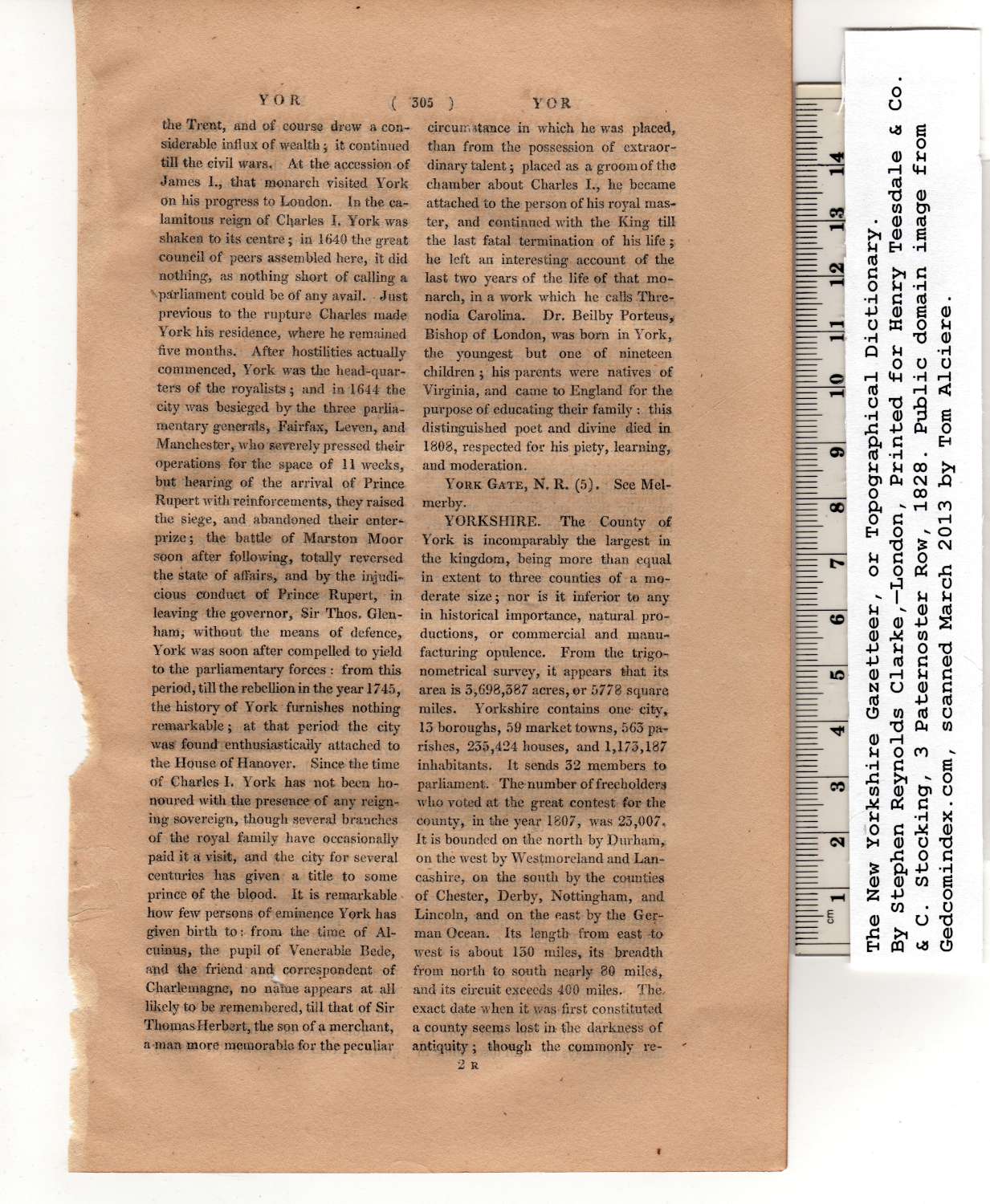|
the Trent, and of course drew a con-
siderable influx of wealth ; it continued
till the civil wars. At the accession of
James 1., that monarch visited York
on his progress to London. In the ca-
lamitous reign of Charles I. York was
shaken to its centre ; in 16*40 the great
council of peers assembled here, it did
nothing, as nothing short of calling a
parliament could be of any avail. Just
previous to the rupture Charles made
York his residence, where he remained
five months. After hostilities actually
commenced, York was the head-quar-
ters of the royalists; and in 1644 the
city was besieged by the three parlia-
mentary generals, Fairfax, Leven, and
Manchester, who severely pressed their
operations for the space of 11 weeks,
but hearing of the arrival of Prince
Rupert with reinforcements, they raised
the siege, and abandoned their enter-
prize; the battle of Marston Moor
soon after following, totally reversed
the state of affairs, and by the injudi-
cious conduct of Prince Rupert, in
leaving the governor, Sir Thos. Glen-
ham; without the means of defence,
York was soon after compelled to yield
to the parliamentary forces : from this
period, till the rebellion in the year 1745,
the history of York furnishes nothing
remarkable; at that period the city
was found enthusiastically attached to
the House of Hanover. Since the time
of Charles I. York has not been ho-
noured with the presence of any reign-
ing sovereign, though several branches
of the royal family have occasionally
paid it a visit, and the city for several
centuries has given a title to some
prince of the blood. It is remarkable
how few persons of eminence York has
given birth to: from the time of Al-
cuinus, the pupil of Venerable Bede,
and the friend and correspondent of
Charlemagne, no name appears at all
likely to be remembered, till that of Sir
Thomas Herbert, the son of a merchant,
a man more memorable for the peculiar
circumstance in which he was placed,
than from the possession of extraor-
dinary talent; placed as a groom of the
chamber about Charles I., he became
attached to the person of his royal mas-
ter, and continued with the King till
the last fatal termination of his life;
he left an interesting account of the
last two years of the life of that mo-
narch, in a work which he calls Thre-
nodia Carolina. Dr. Beilby Porteus,
Bishop of London, was born in York,
the youngest but one of nineteen
children ; his parents were natives of
Virginia, and came to England for the
purpose of educating their family : this
distinguished poet and divine died in
1808, respected for his piety, learning,
and moderation. |
York Gate, N. R. (5). See Mel-
merby.
YORKSHIRE. The County of
York is incomparably the largest in
the kingdom, being more than equal
in extent to three counties of a mo-
derate size; nor is it inferior to any
in historical importance, natural pro-
ductions, or commercial and manu-
facturing opulence. From the trigo-
nometrical survey, it appears that its
area is 5,698,387 acres, or 5778 square
miles. Yorkshire contains one city,
13 boroughs, 59 market towns, 563 pa-
rishes, 235,424 houses, and 1,175,187
inhabitants. It sends 32 members to
parliament. The number of freeholders
who voted at the great contest for the
county, in the year 1807, was 23,007.
It is bounded on the north by Durham,
on the west by Westmoreland and Lan-
cashire, on the south by the counties
of Chester, Derby, Nottingham, and
Lincoln, and on the east by the Ger-
man Ocean. Its length from east to
west is about 130 miles, its breadth
from north to south nearly 80 miles,
and its circuit exceeds 400 miles. The.
exact date when it was first constituted
a county seems lost in the darkness of
antiquity; though the commonly re-
2 R |
